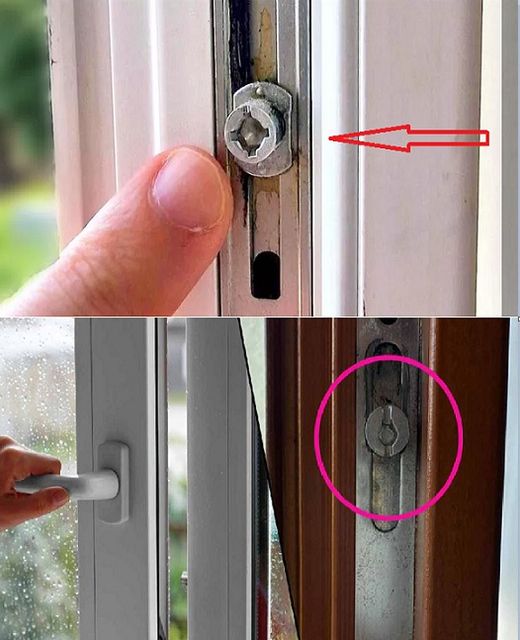ADVERTISEMENT
**Optimize Your Home’s Energy Efficiency: The Essential Guide to Adjusting Windows for Winter**
As the cold weather sets in, homeowners begin to brace for the inevitable rise in heating costs. But what if there were a way to keep your home warm without drastically increasing your energy bills? One of the most effective ways to optimize your home’s energy efficiency during the winter months is by properly adjusting and maintaining your windows. Windows can account for up to 25% of heat loss in a home, so making the right adjustments can result in significant savings. Here’s your essential guide to ensuring your windows are ready for winter, keeping your home cozy and your energy bills in check.
### Why Windows Matter in Winter Energy Efficiency
Windows are a key element of your home’s thermal envelope, the barrier that separates the indoor environment from the outside. During the winter, heat naturally escapes through windows, causing your heating system to work harder to maintain a comfortable temperature. Drafts, poor insulation, or worn-out seals can exacerbate the problem, leading to higher energy consumption and increased heating costs.
By addressing these issues and making a few adjustments, you can improve your home’s overall energy efficiency. The good news is that there are simple, cost-effective steps you can take to optimize your windows for winter.
### 1. Seal Gaps and Cracks
Over time, the seals around windows can degrade, allowing cold air to enter your home and warm air to escape. Identifying and sealing these gaps can significantly reduce heat loss and prevent drafts. Here’s how to get started:
– **Inspect Window Seals:** Look for cracks or tears in the rubber or silicone seals around your windows. If you notice any damage, replace the seals or weatherstripping with new materials. This is an affordable and effective way to improve insulation.
– **Use Caulk for Small Gaps:** For smaller cracks or gaps around the window frame, use caulk to seal them. Be sure to choose a high-quality, weather-resistant caulk that can withstand temperature fluctuations.
– **Consider Window Insulation Film:** If your windows are older or have significant gaps, you might consider applying window insulation film. This clear, plastic film creates an extra layer of protection, preventing heat from escaping and blocking drafts.
### 2. Install Storm Windows or Window Inserts
For homes with older windows, installing storm windows or temporary window inserts can be a game-changer. These additions create an extra barrier between the cold air outside and the warm air inside, reducing heat loss.
– **Storm Windows:** These are additional windows installed over your existing ones. They help improve insulation by creating an air space between the two layers. Storm windows can be especially effective for homes with single-pane windows, providing a significant increase in energy efficiency.
– **Window Inserts:** If installing storm windows isn’t feasible, window inserts are another option. These transparent acrylic or polycarbonate panels fit snugly inside your existing window frames, creating an additional layer of insulation. They’re removable, so you can take them off when warmer weather arrives.
### 3. Consider Energy-Efficient Window Treatments
Another simple way to adjust your windows for winter is by using energy-efficient window treatments. The right curtains or blinds can help keep the cold at bay, while also adding a layer of style to your home.
– **Thermal Curtains:** These curtains are specifically designed to reduce heat loss. They feature a layer of insulating material that helps keep warmth inside, making them an excellent choice for winter months. Be sure to close them at night to trap heat, and open them during the day to take advantage of natural sunlight.
– **Cellular Shades:** Also known as honeycomb shades, these window coverings feature air pockets that provide extra insulation. Cellular shades are excellent at reducing heat loss, and many models are designed to trap cold air from entering while allowing warmth to stay inside.
– **Roman Shades or Drapes:** These can also help keep your home warm, especially if they are made from heavy fabrics. Choose thick, insulating materials such as velvet or wool to block out drafts effectively.
### 4. Upgrade to Energy-Efficient Windows
While it’s an investment, upgrading to energy-efficient windows is one of the most effective ways to optimize your home’s energy efficiency. Modern windows are designed with features that reduce heat transfer and increase insulation. Here’s what to look for:
– **Double- or Triple-Pane Windows:** These windows feature multiple panes of glass, with an insulating gas like argon or krypton between them. They offer superior insulation and can significantly reduce heat loss.
– **Low-E Glass Coatings:** Low-emissivity (Low-E) glass coatings reflect heat back into the home, reducing the amount of heat that escapes through the window. These coatings also help block UV rays, preventing your furniture and fabrics from fading.
– **Energy Star Certification:** When shopping for replacement windows, look for models that have earned the Energy Star certification. These windows meet specific energy efficiency standards set by the U.S. Department of Energy and can help reduce your energy consumption by as much as 12%.
### 5. Utilize Window Draft Stoppers
If you’re dealing with drafty windows but aren’t ready to make major investments, window draft stoppers are an inexpensive, quick solution. These fabric tubes can be placed along the bottom of windows to prevent cold air from seeping in.
For Complete Cooking STEPS Please Head On Over To Next Page Or Open button (>) and don’t forget to SHARE with your Facebook friends
ADVERTISEMENT
